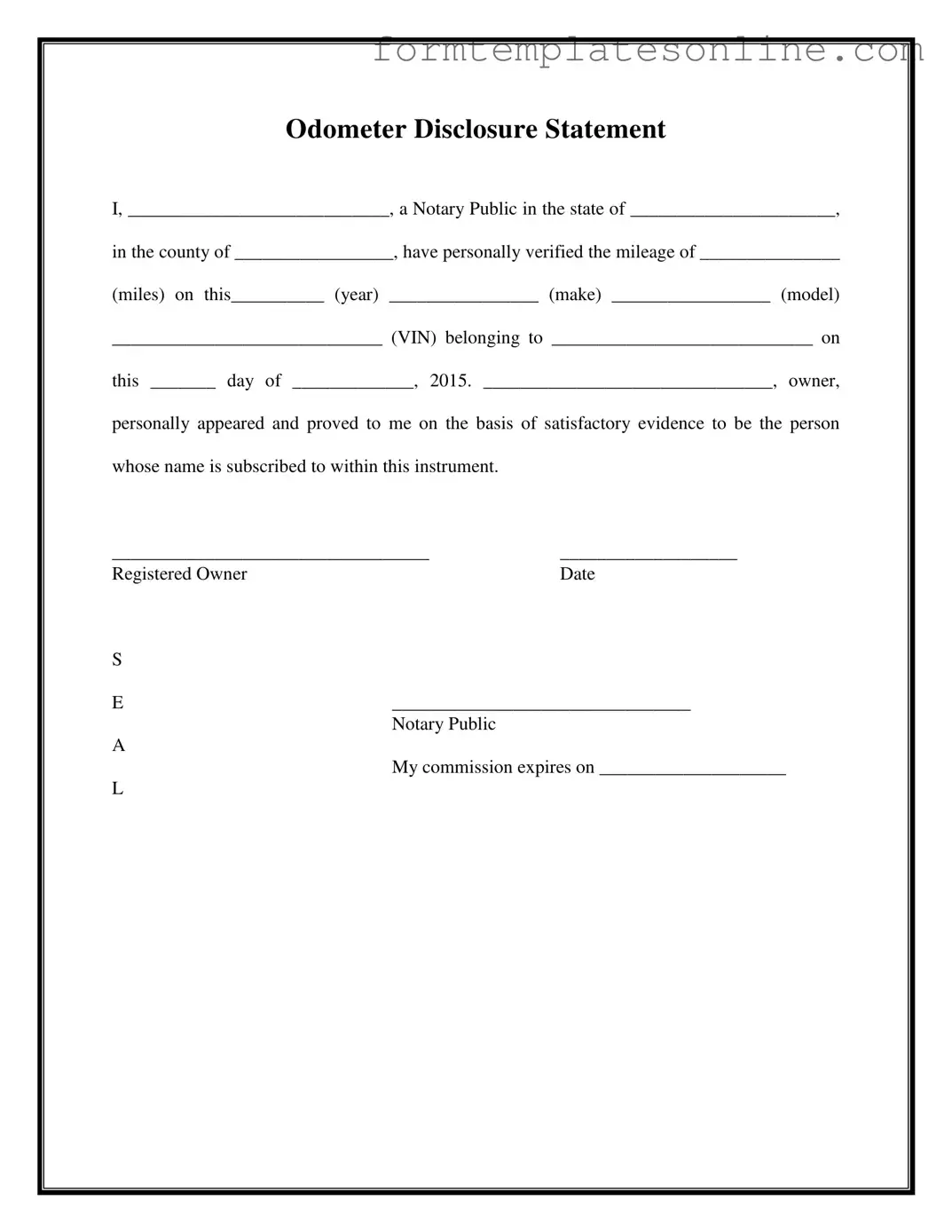What is a Notarized Odometer Statement?
A Notarized Odometer Statement is a document used to confirm the mileage of a vehicle at the time of sale or transfer. It is signed by the vehicle owner and notarized by a public notary. This statement helps protect both the seller and the buyer by providing a legal record of the vehicle's mileage.
Why do I need a Notarized Odometer Statement?
This statement is essential when transferring ownership of a vehicle. It prevents fraud related to odometer readings, ensuring that the buyer is aware of the actual mileage. Many states require this document as part of the vehicle sale process, especially for used cars.
Who can notarize the Odometer Statement?
A Notary Public, who is a person authorized by the state to perform notarial acts, can notarize the Odometer Statement. They verify the identity of the signers and witness the signing of the document, ensuring its legitimacy.
What information is included in the Notarized Odometer Statement?
The statement includes the current mileage of the vehicle, the year, make, model, and Vehicle Identification Number (VIN). It also contains the name of the owner, the date of notarization, and the notary's signature and seal. All this information is crucial for validating the document.
How do I complete a Notarized Odometer Statement?
First, fill in the required information, such as your name, vehicle details, and mileage. Then, take the completed form to a Notary Public. They will verify your identity and witness your signature. After notarization, the document is considered official.
Is there a fee for notarizing the Odometer Statement?
Yes, most notaries charge a fee for their services. The amount can vary depending on the state and the notary's policies. It’s a good idea to check in advance to understand the costs involved.
Do I need to have the Odometer Statement notarized every time I sell a vehicle?
Yes, if your state requires it, you should have a Notarized Odometer Statement for each vehicle sale. This helps ensure that the buyer has accurate information about the vehicle's mileage and protects you from potential disputes.
What if I lose the Notarized Odometer Statement?
If you lose the document, you may need to complete a new Notarized Odometer Statement. You can contact the notary who originally notarized the document, but they may not keep a copy. It’s always wise to keep a record of important documents like this.
Can I use a Notarized Odometer Statement for a vehicle that is being gifted?
Yes, a Notarized Odometer Statement can also be used when gifting a vehicle. Even though no money is exchanged, it’s still important to document the mileage accurately to avoid any future issues.

